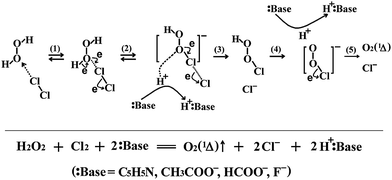Production of singlet oxygen by the reaction of non-basic hydrogen peroxide with chlorine gas†
Abstract
Non-basic

* Corresponding authors
a
State Key Laboratory of Molecular Reaction Dynamics, Dalian Institute of Chemical Physics, Chinese Academy of Sciences, 457 Zhongshan Road Dalian, 116023 Liaoning Province, P. R. China
E-mail:
dlz@dicp.ac.cn
Fax: +86 411 84675584
Tel: +86 411 84379010
Non-basic

 Please wait while we load your content...
Something went wrong. Try again?
Please wait while we load your content...
Something went wrong. Try again?
W. Tian, W. Shi, H. Yang, R. Cui and L. Deng, Phys. Chem. Chem. Phys., 2012, 14, 13344 DOI: 10.1039/C2CP41690E
To request permission to reproduce material from this article, please go to the Copyright Clearance Center request page.
If you are an author contributing to an RSC publication, you do not need to request permission provided correct acknowledgement is given.
If you are the author of this article, you do not need to request permission to reproduce figures and diagrams provided correct acknowledgement is given. If you want to reproduce the whole article in a third-party publication (excluding your thesis/dissertation for which permission is not required) please go to the Copyright Clearance Center request page.
Read more about how to correctly acknowledge RSC content.
 Fetching data from CrossRef.
Fetching data from CrossRef.
This may take some time to load.
Loading related content
